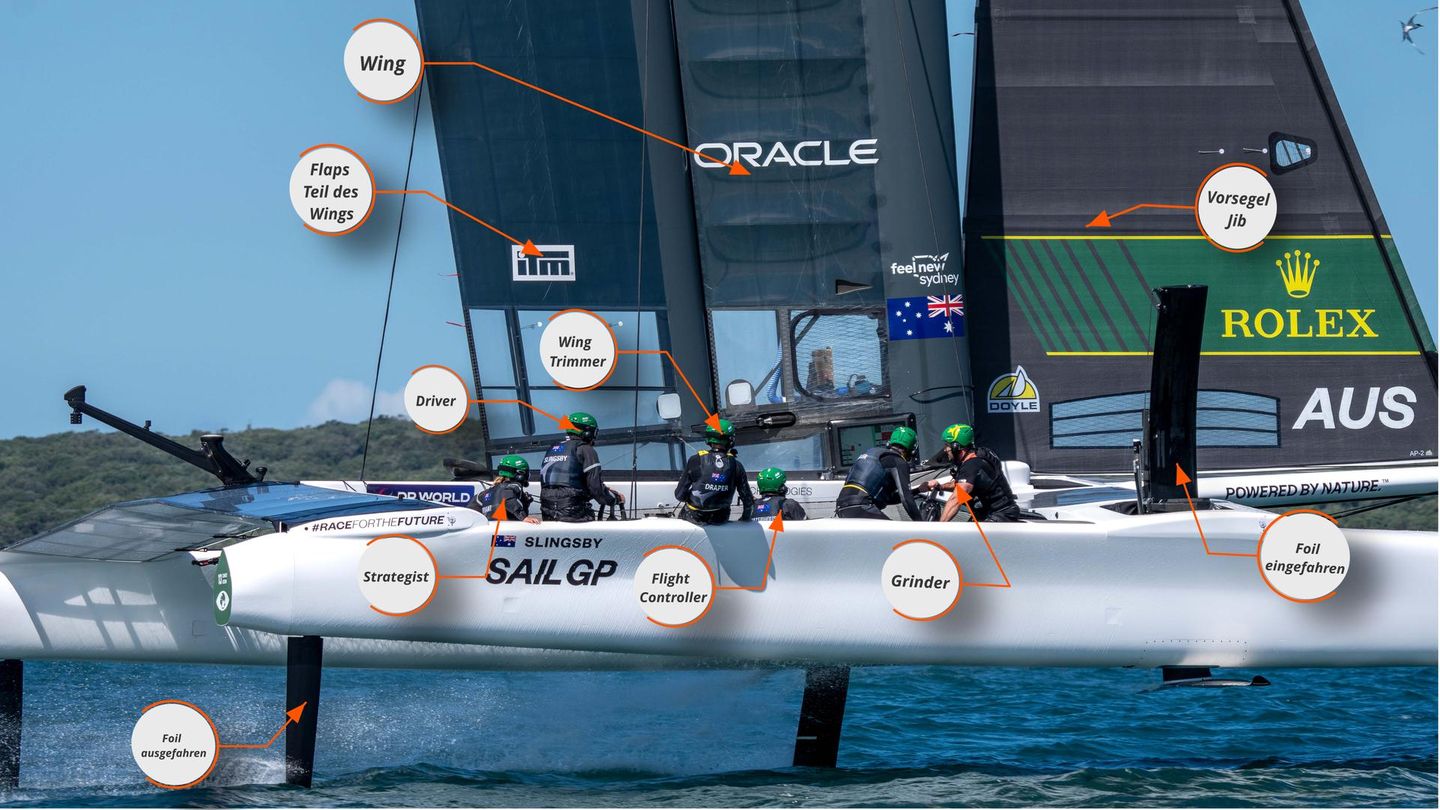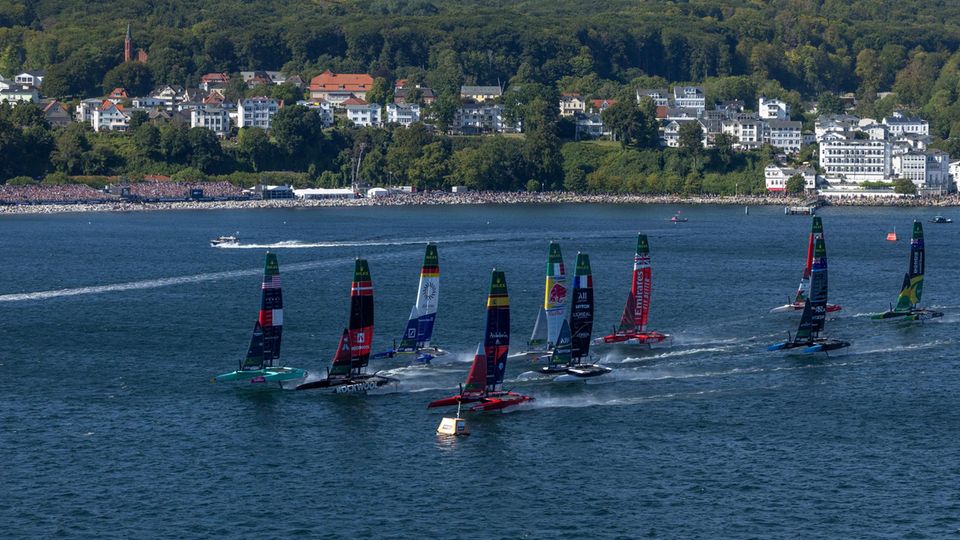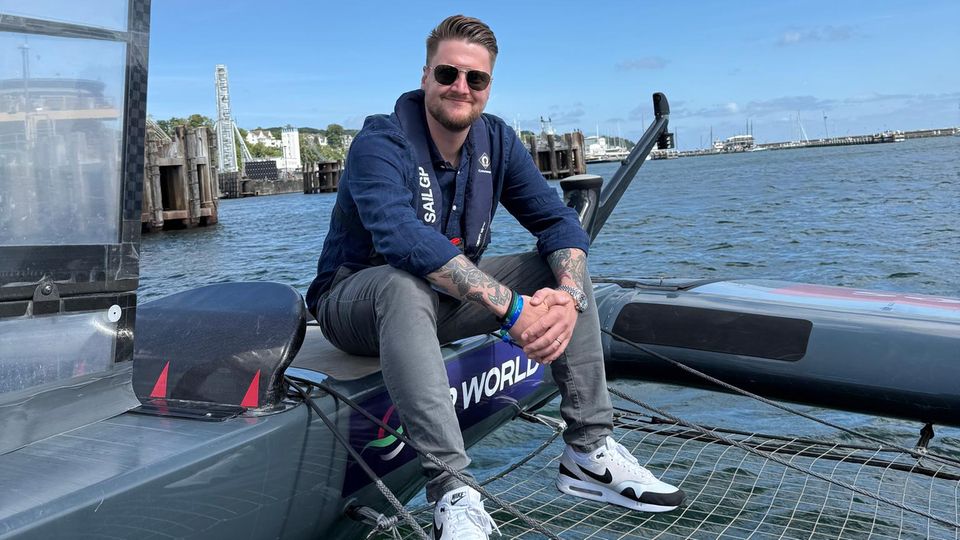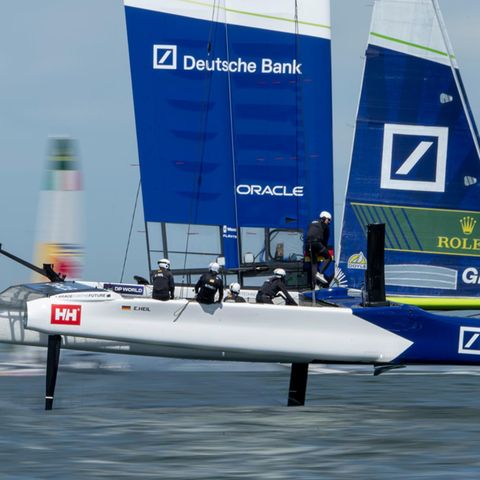Sailgp on Rügen
Who needs engines for racing?
For the first time, the Sailgp made a guest appearance in Germany – and met a place full of ruins. But in Sassnitz, however, it was impressively demonstrated how to staged sailing excitingly.
The passage of Sassnitz on Rügen is a tragedy. Every few meters are ruins for which the city apologizes with large signs.
“This house does not belong to the city of Sassnitz,” it says. “The owner is solely responsible for the condition.” The small port city, it seems, is difficult to carry in its past. Or is still in the middle of it. Who knows.
This is tragic, because Sassnitz has everything a city can only wish for: substance, location, view. Everywhere the Baltic Sea flashes, the wind fresh, the air salty, strong. A place that should actually glitter.
San Francisco, New York … and Sassnitz
And he does that these days, because Sassnitz is the scene of an event of world format. For the first time, one of the most spectacular sailing competitions is held here – with a repetition guarantee. For a city with almost 10,000 souls, something like a miracle.
We are talking about the Sailgp. While classic regattas are usually only about cheering at the start, and the boats then leave the harbor on a reunion, the sailing boats of the Sailgp, F50, remain within sight. The sport becomes tangible. Almost to touch.
The proximity to the port condenses the action in a confined space. Nowhere do sailing boats ride faster. This is also due to the simplicity of the course: in principle, the catamarans only have to be marked to the next. There a turn, then back – and again from the front. To “stay in the wind”, as sailors say, it takes precisely maneuvers. Straight out would be shorter, but the moody nature forces the crews to change course. All of this happens within sight of the audience.
At the premiere in Sassnitz, the participants from Denmark even managed to break the speed record. When the first course marking by bypass, they flew over the bay of 103.93 kilometers per hour. You could literally feel how man and material had to struggle with the unfolding primeval power and the active powers.
“Flying” is a word that you often hear in the Sailgp. Because only when the foils – the wings under the gums – do the catamarans lift out of the water. Once that happens, the boats race from it. The noise is unique. It has something of parked electric car and science fiction machine.
This is how the fastest racing catamaran in the world works

The F50 catamaran
If you are familiar with high-performance sailing, the F50 catamaran should be familiar. It is the further development of the AC50 from the famous Millionaire Regatta America’s Cup, which turned to a hull boat in 2017. The relationship is now only external. The F50 was specifically developed for the requirements of the Sailgp racing series founded in 2019. In contrast to other regattas, all teams use identical boats. Like a wing boat of the F50, the F50 races over the water on so -called foils and, due to the low water resistance, achieves speeds of a good 100 km/h at 40 km/h wind. This makes the F50 the fastest sailboat ever, which not only reaches top speeds on a straight course, but with all maneuvers. The F50 is just as little thought for the Hohe Lake as a Formula 1-Bolide for road traffic. Even smaller waves can get the highly bred sailing device from the foils and severely damage the fragile boat
© Rolex
In contrast to other racing series, the F50 all belong to the organizer. This has the advantage that every catamaran is exactly the same. A victory does not depend on construction or budget, but solely on the skills of the crew.
Anyone who drives SailGP often has already had Olympic medals in their pocket
As exciting as the technology is – the actual stars are people. Up to six professionals drive an F50 over the waves, almost all high-performance athletes, many times with Olympic gold. Among them: Martine Grael, Steuerwoman of the Brazilians. Anyone who gives her can feel it immediately: this little woman has ocean hands. The skin rough, the fingers have long been used to hard dew and salt water.
Martine is highly decorated and a legend in the scene. And yet she speaks almost reluctantly of her success. The teamwork and the women’s power are more important to her. Because there is a quota in the Sailgp: women must be on board. And there they always show that it is completely irrelevant for most tasks, whether man or woman. Grael welcomes the quota: “For women, the path in competitive sports is often interrupted at a certain point. To get ahead, you have to fight very hard. A quote is pushing the way and gives women a fair opportunity to prove themselves.”
In reality, gender hardly plays a role anyway, adds the Olympic champion. “Every time I have to remember that there are different genders in the crew. You quickly forget that.” Lived inclusion. She says enthusiastically about the SailGP: “For me there is no better sailing race.”

The audience probably saw it very similar. More than 26,000 people were able to convince themselves of the racing series in Sassnitz at the German premiere. The grandstands on the kilometer -long protective wall directly on the water were filled to the last seat on both days of the race, the port populated from morning to evening. Every trip by the sailors was cheered, especially the first victory of the German team on the domestic coast – celebrated frenetically. This also makes the Sailgp special: the athletes experience the feedback of the fans up close. Try that in the middle of the ocean.
The date for the coming year has already been determined. The Sailgp will come back to Sassnitz on the first day of the race. Germany officially has a new racing series in the country – without any engines and exhaust gases.
What remains? Maybe international attention looks like a small Olympics. Maybe she shakes those whose building ruins so far shamelessly defaces the place. Once tidy – and Sassnitz no longer seems lost. But suddenly plausible on a map, next to the other station of the Sailgp, such as San Francisco, New York, Geneva.
Source: Stern
I am Pierce Boyd, a driven and ambitious professional working in the news industry. I have been writing for 24 Hours Worlds for over five years, specializing in sports section coverage. During my tenure at the publication, I have built an impressive portfolio of articles that has earned me a reputation as an experienced journalist and content creator.





